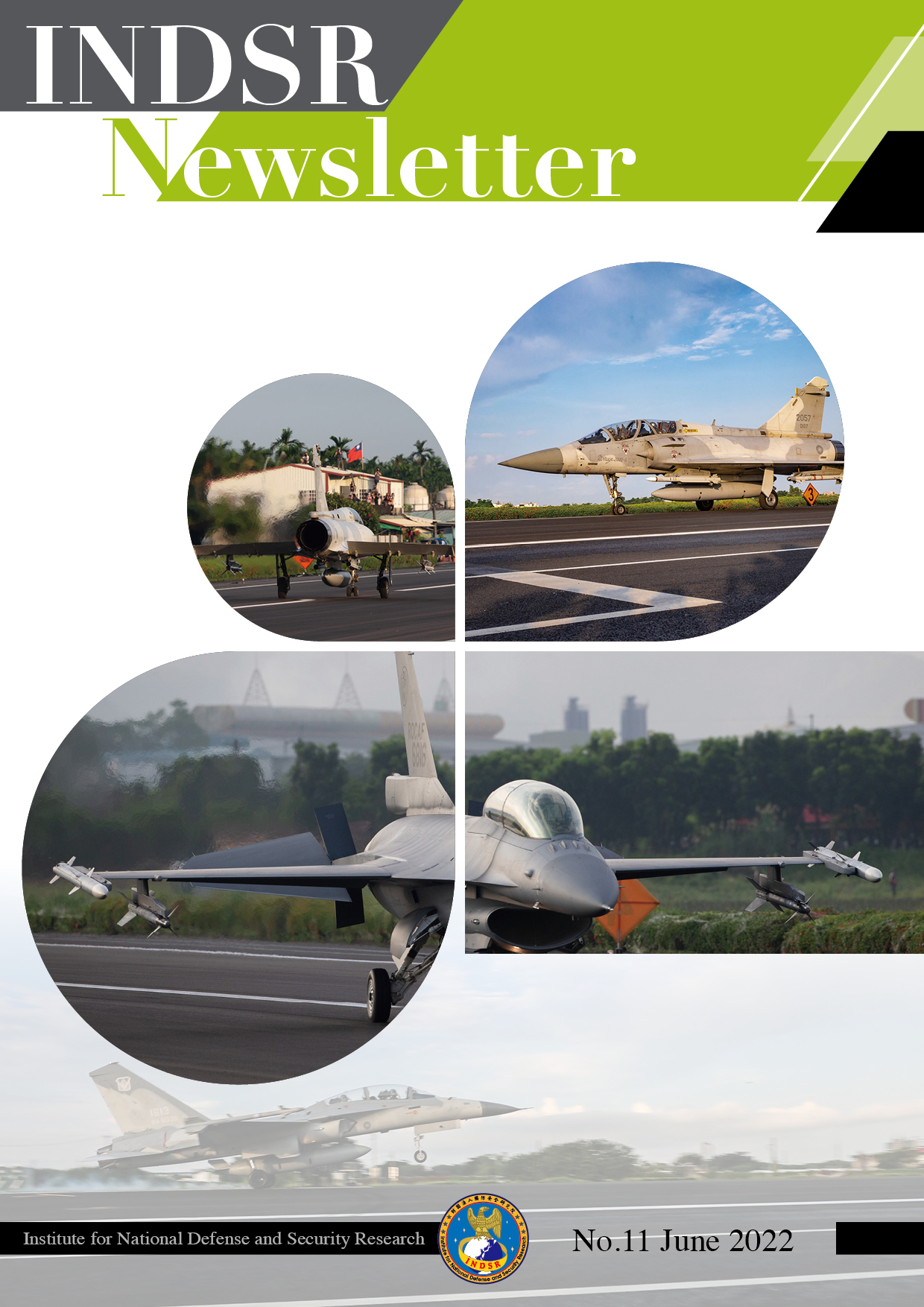Double Impact on China’s Food Security and Food Supply Crisis
2022.07.07
Views
860
PDF link:
Since the outbreak of the Russia-Ukraine war, the global food supply and trade have been impacted tremendously. On the other hand, according to the statistics from Nomura Holdings, nearly 400 million people in 45 Chinese cities have entered full or partial lockdown as of mid-April under the CCP’s dynamic clearing policy.[1] Although Chinese Premier Li Keqiang stressed the need to ensure a bumper harvest and stable supply of major agricultural products in maintaining social and price stability and protecting people’s livelihoods during the State Council executive meeting on April 20, the local governments continue to prioritize pandemic prevention and implement strict restrictions to control the pandemic, taking a toll on the economic development and food supply in China.
Food security is a strategic issue
According to the General Administration of Customs of the People’s Republic of China, the amount of imported food hit a record high at 164.5 million tons, compared to the year-over-year 18.1% in 2020,[2] accounting for 24.1% out of the total food production of 682.85 million tons.[3] China is the world’s largest food importer, and its food import dependency ratio has increased to 19.4%. Divided by categories, the year-over-year growth of grain, mainly rice, wheat, and corn, is 82.9%, serving as the main driver for imported food growth, while the import growth of corn is 152.2% in the same period. Plus, China is the world's largest soybean importer, and its self-sufficiency rate is less than 15%. [4]
From the perspective of the food self-sufficiency rate, Du Ying, former deputy director of the National Development and Reform Commission, pointed out that China's food self-sufficiency rate dropped to 76.8% in 2020, and the ratio decreased by more than one percentage point every year over the past 20 years. The ratio decreased faster than in Japan, South Korea, and Taiwan. It is estimated China’s food self-sufficiency rate will drop to 65% by 2035.[5] Previously, the Rural Development Institute at the Chinese Academy of Social Sciences published a report suggesting that by the end of 2025 (or the 14th five-year plan), China will face a food gap of about 130 million tons.[6] China's food security has attracted increasing attention in the world.
Faced with increasing food imports and a decreasing food self-sufficiency rate, in April 2022, Xi Jinping pointed out in an article in the Qiushi Journal, “We have to seize the initiative in food security firmly. The amount of food is tactics, but food security is strategy.”[7] As early as at the CCP Central Economic Work Conference, the Central Rural Work Conference by the end of 2021, and the Two Sessions this year, Xi Jinping has reiterated the importance of food security. Facing extreme weather events, shortage of arable land and water resources, and natural disasters, the Chinese government has recognized threats to food production and security.
Double impact of the Russia-Ukraine war and COVID-19
As Russia and Ukraine both play a major role in global food markets, the war has disrupted the food supply chain. For China, Ukraine was its 6th largest food exporter in 2021 with the main exports to China being corn, wheat, and sunflower seed oil. China is the world’s largest corn importer. In 2021, about 30 percent of Ukraine’s corn exports went to China. [8] Since the Russia-Ukraine war broke out, China has turned to the U.S. for 1.084 million tons of corn imports, the largest food import from the U.S. since May last year.[9] Due to supply shortage, domestic corn prices in China remain high, and as corn is the main feed ingredient for pigs, the costs of pig farming have increased accordingly. Plus, the Russia-Ukraine war has reduced the production of sunflower seed oil in Ukraine, pushing up the prices of substitute products such as soybean oil and increasing the import costs of China.
Second, it’s already the spring sowing season, but as the local governments continue to implement strict COVID-19 prevention and control measures, many farmers can't return to their land to sow, impacting food production. Take Heilongjiang, Jilin, and Liaoning provinces in Northeast China as an example. This is the main production area of corn, rice, and soybeans in China, and is known as the “granary of the world.” According to statistics, the total food production of the Heilongjiang province in 2021 was 78.677 million tons, accounting for 11.5% of China’s total food production. It's ranked first in food production volume, with Jilin ranked 5th and Liaoning 12th. However, the three provinces have entered lockdowns or closed management since February and March this year. The restrictions on personnel movement and logistics have impacted the production plan for spring plowing. Although the Ministry of Agriculture and Rural Affairs of the People’s Republic of China has announced in March farmers should go into spring plowing and secure the spring crop sowing area, the strict requirements for PCR tests, interruption of inter-provincial logistics and transportation, and high freight costs have hampered farmers’ spring plowing.
Global food prices continue to rise. China’s food supply will face increasing pressure later this year
The Russia-Ukraine war has disrupted global food production and trade. As Russia is the world’s largest exporter of fertilizers, the decrease in food production and the soaring prices of fertilizers all lead to increasing global food prices. According to the Food and Agriculture Organization of the United Nations (FAO), the FAO Food Price Index (FFPI) averaged 159.3 points in March 2022, reaching the highest level since 1990.[11] Given the current international situation, global food prices are expected to rise.
At the international level, despite the rising global food prices, China has stored enough food by the end of 2021, and along with the government's policy to ensure commodity supply and price stability, the Chinese food prices in the first season of 2022 only rose by 1.7% on a year-over-year basis. In March, the year-over-year Consumer Price Index (CPI) rose by 1.5%. These show that Chinese food prices haven’t been soaring and currently China does not have a food security problem. However, as the global food supply becomes strained and the international prices of soybeans, corn, and fertilizers keep soaring, it is expected the market prices of these products will remain high in the Chinese domestic market, putting more pressure on the pig farming industry. At the national level, since the planting area of spring plowing takes up more than half of the annual production, the delay in spring plowing is going to impact China’s food production this year, reducing the production of spring crops such as rice and corn. Furthermore, as long as the CCP’s dynamic clearing policy remains, we can predict the local governments will not easily let go of pandemic restrictions, which may impact the delivery of produce and raw materials in the country, and even summer plowing later this year. From this point of view, the duration of China’s Covid prevention and control measures will impact and put more strain on the Chinese food supply later this year.
(Originally published in the “National Defense and Security Real - time Assessment”, May 5, 2022, by the Institute for National Defense and Security Research.)
(The contents and advice in the assessments are the personal opinions of the authors, and do not represent the position of the Institute for National Defense and Security Research.)
[1]“Nearly 400 Million People in China under Full or Partial Lockdown Due to A Strict Zero-Covid Policy,” Business Insider, April 19, 2022, https://www.businessinsider.in/international/news/nearly-400-million-people-in-china-under-full-or-partial-lockdown-due-to-a-strict-zero-covid-policy/articleshow/90927364.cms.
[2]“The Table of Quantitative Values of Major Commodities Imported in December 2021 (RMB Value),” General Administration of Customs of the People’s Republic of China, January 18, 2022.
[3]“Annual Changes in National Major Crop Production (million tons),” Ministry of Agriculture and Rural Affairs of the People’s Republic of China,” http://zdscxx.moa.gov.cn:8080/nyb/pc/index.jsp.
[4]“Speeding up the Revitalization of the Soybean Industry,” Ministry of Agriculture and Rural Affairs of the People’s Republic of China, March 29, 2022, http://www.moa.gov.cn/ztzl/ymksn/jjrbbd/202203/t20220329_6394563.htm.
[5] Du Ying, “Du Ying: China must Keep Food Self-sufficiency Rate above 70%. It can’t Continue to Decline,” The Paper, January 13, 2022, https://m.thepaper.cn/newsDetail_forward_16255265.
[6] Huang Jingzhe, “The Self-sufficiency Rate is under Increasing Pressure. The Chinese Academy of Social Sciences: Food Gap will Reach 130 million Yons,” TechNews, August 19, 2020, https://technews.tw/2020/08/19/the-self-sufficiency-rate-is-under-increasing-pressure-and-the-chinese-academy-of-social-sciences-the-food-gap-will-reach-130-million-tons/.
[7] Xi Jinping, “Insisting on Solving the Three Rural Issues as the most Important Part of the Party’s Work. The Whole Party and the Whole Society are to Promote the Revitalization of the Countryside,” www.qiushi.com, March 31, 2022.
[8]“30% of China’s Corn Imports Come from Ukraine. Short-term Prices Continue to Soar,” Central News Agency, February 24, 2022, https://www.cna.com.tw/news/acn/202202240236.aspx.


